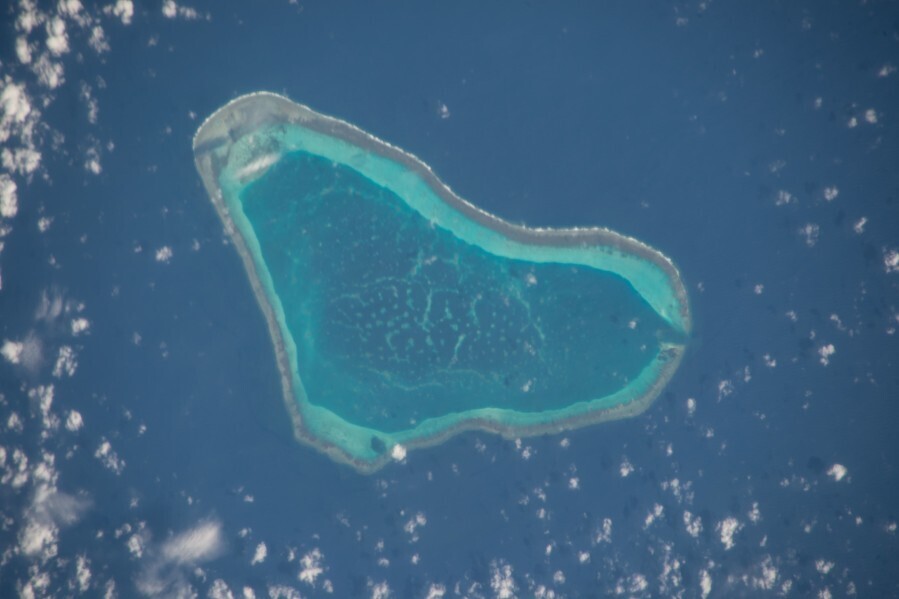Hanging tough together: ASEAN countries' survival strategy amid Sino-US rivalry
Rising Sino-US rivalry and a rapidly changing geopolitical environment means that smaller states in the Asia-Pacific are increasingly compelled to "choose sides" between the two major powers. They are, however, not short of options.

Writing in 1999, American historian John Lewis Gaddis bemoaned the passing of the Cold War era. A decade after the fall of the Berlin Wall, the world had seen a panoply of global problems, such as genocide in Central Europe, defeated dictators who refused to bow out and terrorism in the American heartland.
Two decades from 1999, observers of strategic affairs in the Asia-Pacific can easily channel Gaddis. Three decades after 1989, the world as we know it is being torn asunder. The problems, just to name a few, range from retreats from globalisation, the perceived loss of American leadership, the onset of financial crises and pandemics as well as the triumphs and trials associated with the rise of China.
The confrontation between the two great powers has reduced the room for smaller countries to manoeuvre.
In the Asia-Pacific, a relatively salubrious geopolitical climate prevailed after the end of the Cold War. Smaller states, including those in Southeast Asia, continued to depend on the certainty of US security guarantees, while at the same time latching onto the world economic engine that was China.
Under the current Trump administration, however, the centre no longer holds. The administration has increasingly taken a hardline stance against China across all fronts, and China has given back as good as it gets. The confrontation between the two great powers has reduced the room for smaller countries to manoeuvre. Predictions such as a new cold war will not go away any time soon.
China, for all its declarations about peaceful cooperation with smaller countries, has embroiled itself in a series of disputes and confrontations recently.

To compound matters for smaller regional states, China and the US' approaches to the region lack clarity and consistency.
As for the United States, its much-touted Indo-Pacific Strategy has gained little traction in the region. Its recent paper detailing Washington's approach to China is laudable, but ridden with contradictions.
China, for all its declarations about peaceful cooperation with smaller countries, has embroiled itself in a series of disputes and confrontations recently. In June, China and India were in a deadly standoff in the remote eastern Ladakh region, sparking protests across India. Beijing is engaged in territorial disputes and disagreements with Japan and Southeast Asian countries, in effect alienating itself from the region.
As for the US, its much-touted Indo-Pacific Strategy has gained little traction in the region. Its recent paper detailing Washington's approach to China is laudable, but ridden with contradictions. Zack Cooper notes, for example, the Trump administration's transactional "America First" approach fails to square with statements that the US will continue to commit to a "free, open and rules-based international order".
In short, the Sino-US rivalry and the attendant changes in the geopolitical environment in the Asia-Pacific means that smaller states face an uncertain future. As Wang Gungwu has surmised, many Chinese now believe that the West has "lost its way" and the US is not fit to lead. That said, this does not mean that China is heir apparent.
What then can smaller states do? After all, the old chestnut about "not taking sides" between the US and China is becoming increasingly untenable.
In the disputed South China Sea, there has been growing momentum among some ASEAN members who are disputant parties - Malaysia, the Philippines and Vietnam - to oppose China's position on the issues.
As my colleagues Malcolm Cook and Hoang Thi Ha propose, smaller states in Southeast Asia can consider joining more minilateral and informal coalitions in response to "destabilising actions" from ensuring Sino-US rivalry.
Singapore - together with countries such as Canada, Germany, Indonesia and Italy - have formed a ministerial coordination group - to share information about Covid-19 in the face of Washington's undermining of the World Trade Organization. Singapore is part of the Ottawa Group for WTO Reform, which includes like-minded countries such as Australia, Japan, Kenya, New Zealand, Norway and South Korea.
Another route is to find strength in numbers. Last year, ASEAN released its Outlook on the Indo-Pacific, laying down principles for the broader region. While the paper did not break new ground in substantive terms, the fact that ASEAN could hold its own, against other Indo-Pacific strategies laid out by Australia, India, Japan and the US, is a feat in itself.
Finally, another option is to cooperate, whether tacitly or explicitly, on matters of import. In the disputed South China Sea, there has been growing momentum among some ASEAN members who are disputant parties - Malaysia, the Philippines and Vietnam - to oppose China's position on the issues.

In December last year, Malaysia made a submission to the Commission on the Limits of the Continental Shelf, claiming that it had sovereign rights to natural resources beyond the 200 nautical mile limit of its exclusive economic zone in the South China Sea. The submission follows a joint Malaysia-Vietnam submission, made in 2009, and another submission by Hanoi in the same year.
In the tough neighbourhood that is the Indo-Pacific, however, hanging tough - and together - could yet yield dividends.
In 2016, a widely-followed tribunal ruling rejected Beiijng's claims to most of the maritime waterway and ruled in favour of Manila. Malaysia, the Philippines and Vietnam now assert that claims to rights and jurisdiction should be in accordance to the United Nations Convention on the Law of the Sea. As Robert Beckman notes, the three states are "in effect" treating the 2016 ruling as an authoritative interpretation of the law, although Beijing has continued to reject it outright.
After a December 2019 altercation, whereby 60 Chinese fishing boats, escorted by coast guard vessels, encroached into Indonesia's EEZ, Jakarta has now openly cited the 2016 ruling to support its position on Indonesia's EEZ.
Smaller countries might be caught in the middling middle amid the geopolitical flux and Sino-US rivalry. In the tough neighbourhood that is the Indo-Pacific, however, hanging tough - and together - could yet yield dividends.
This article was first published as ISEAS Commentary 2020/90 "Smaller Countries in the Asia-Pacific: Mired in the Middling Middle" by William Choong.
Related: Indonesia crosses swords with China over South China Sea: 'Bombshell to stop China's expansionism'? | [South China Sea] Pandemic and US-Japan support reasons for Indonesia's strong stance on SCS | The South China Sea: More dangerous and unstable | US aircraft carrier visit and Vietnam's delicate balancing act





